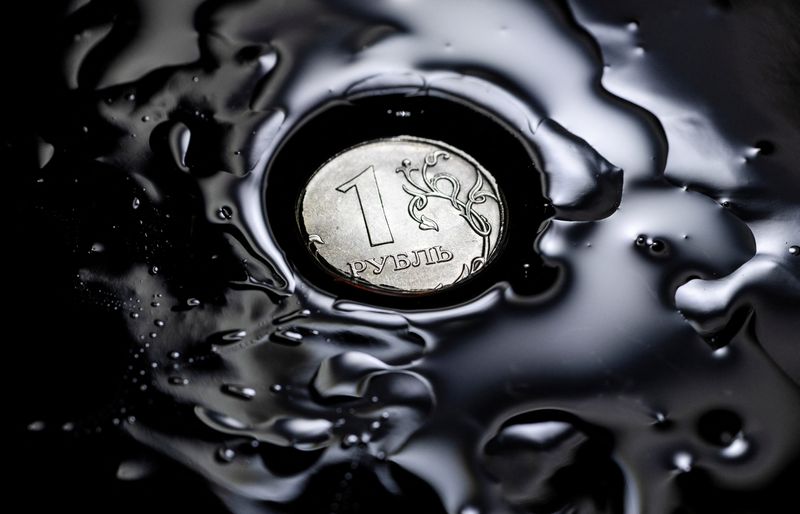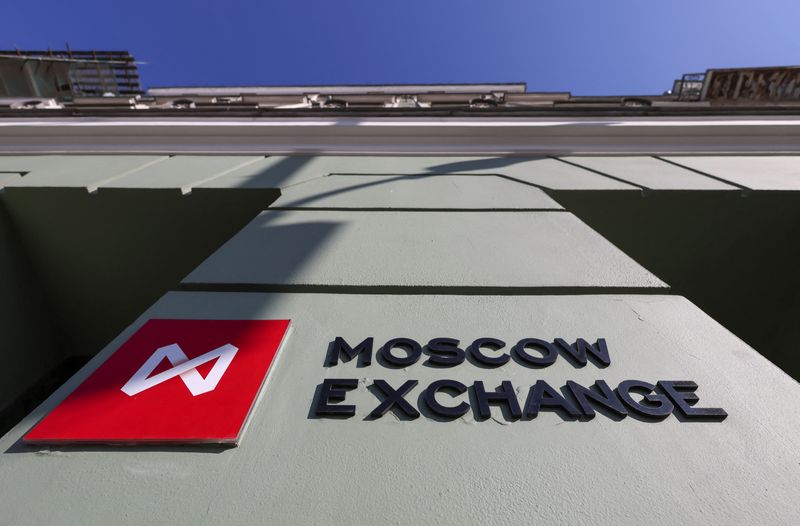(Reuters) -The Russian rouble on Friday hit its strongest level against the euro since June 2020 after an unexpected central bank rate cut, but soon reversed gains and ended the day in the red, while stocks fell after the U.S. Congress voted to ban Russian oil.
The central bank cut its key interest rate to 17% from 20% ahead of a regular board meeting scheduled for April 29, and said it was open to possible further cuts at upcoming meetings.
The volatile rouble rallied shortly after the rate cut, which partially reversed the emergency rate hike that the central bank delivered in late February after Russia started what it calls "a special military operation" in Ukraine on Feb. 24. But the once-free-floating Russian currency finished trading on the Moscow Exchange at levels seen on Thursday.
The rouble eased 0.4% to 76.08 against the dollar, having briefly hit its strongest level since November of 71.
Against the euro, the rouble shed 1.5% to 82.70 after briefly touching 77.0750 for the first time since late June 2020.
The rouble's rapid recovery from the record lows hit in March raises doubts about the durability of its gains. Anyone who tries to buy foreign currency online at a bank in Russia or, illegally, at a foreign exchange booth, or who buys goods and services online denominated in foreign currencies will find the actual rate considerably worse.
Yields on 10-year OFZ treasury bonds, which move inversely to their prices, fell to 10.77% from 11.62% seen before the rate cut.
The surprise rate cut came after Finance Minister Anton Siluanov said this week that his ministry was working with the central bank on measures to make the rouble exchange rate more predictable and less volatile.
"If the experience of the 2014/15 rouble crisis is any guide, a large interest rate cut (like that seen today) is likely to be followed by much more gradual easing as the CBR targets a large positive real interest rate to bring inflation back down to its target," Capital Economics said in a note.
LockoInvest firm said it has revised its year-end rate forecast to 11-12% from not more than 15%.
VOLATILE MARKETS
Moves in the rouble remain jittery and trading volumes on the Moscow Exchange are below average, but the rouble has fully recovered to levels seen before Russian troops entered Ukraine.
The rouble is supported by Russia's strong current account surplus amid high commodity prices as well as Russia's capital controls, said Olga Belenkaya, head of macro research at Finam brokerage.
The rouble has recently been steered by the mandatory conversion of dollar and euro revenues by export-focused companies, while demand for forex is limited by a ban on buying cash dollars and euros as well as by a 12% commission on buying forex online or through a bank.
Given the latest rouble firming, some recovery in demand for FX is possible despite the commission, Otkritie bank said in a note.
On the stock market, the dollar-denominated RTS index fell 1.14% to 1,079.99 points. The rouble-based MOEX Russian index fell 1.6% to 2,592.7 points.

Shares in oil firm Bashneft underperformed the market, losing 4.5% on the day, while shares in rival Lukoil were down 1%.
Oil stocks took a hit after the U.S. Congress on Thursday voted to impose further economic pain on Russia over its actions in Ukraine, passing a measure to remove its "most favoured nation" trade status and another to ban oil imports, which puts into law a previous executive order by President Joe Biden.
